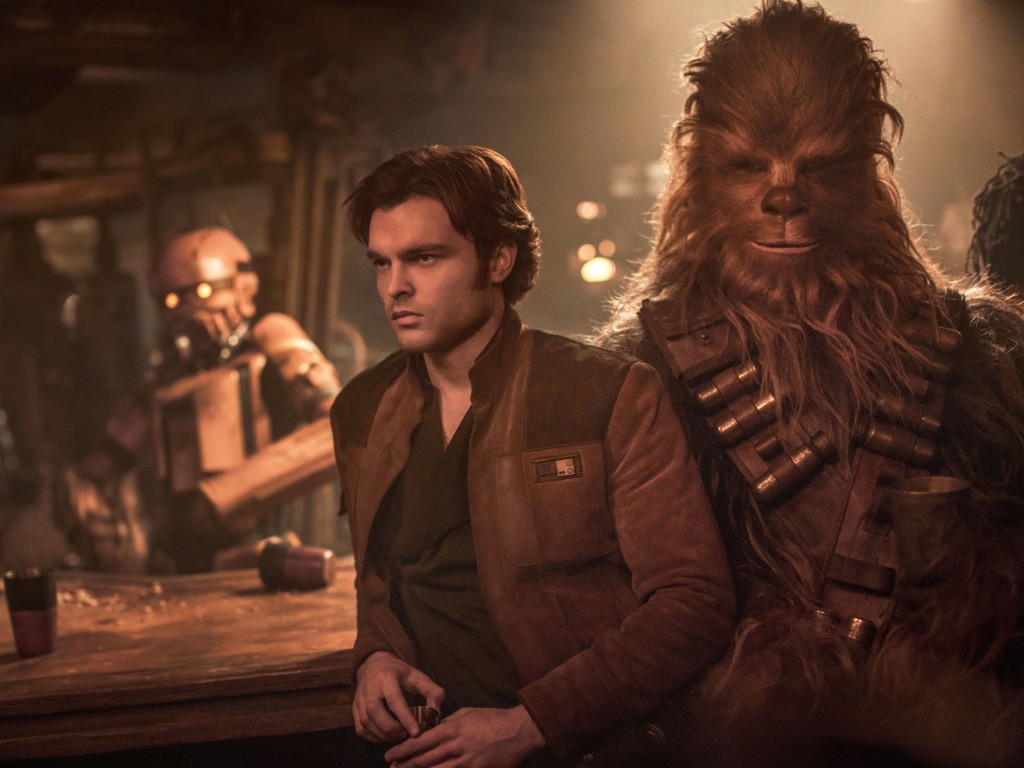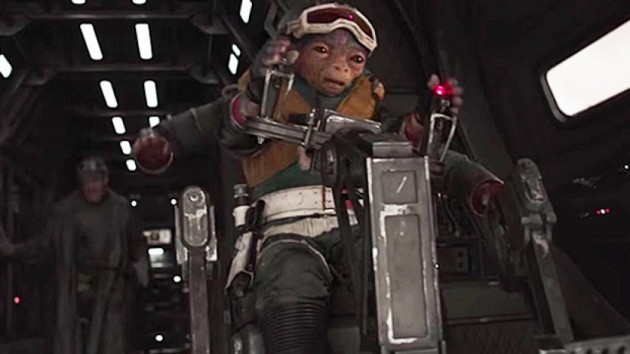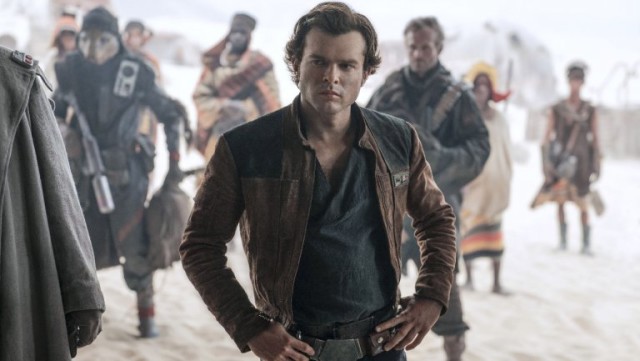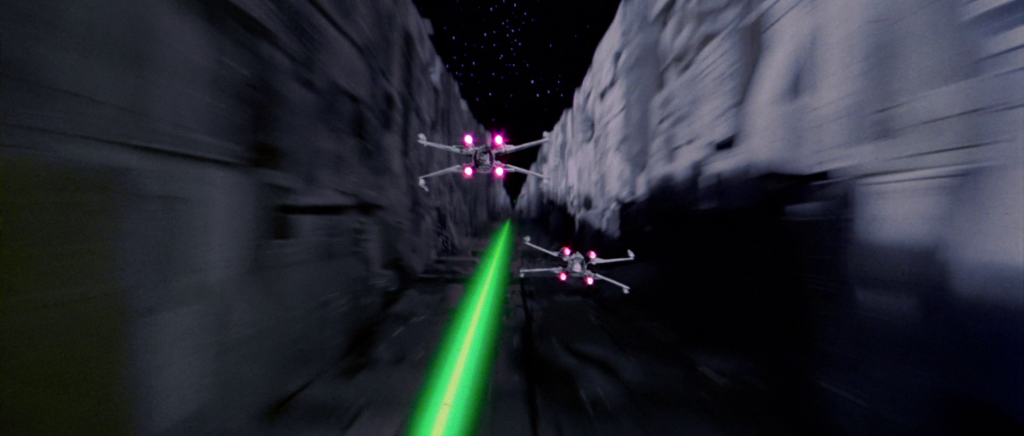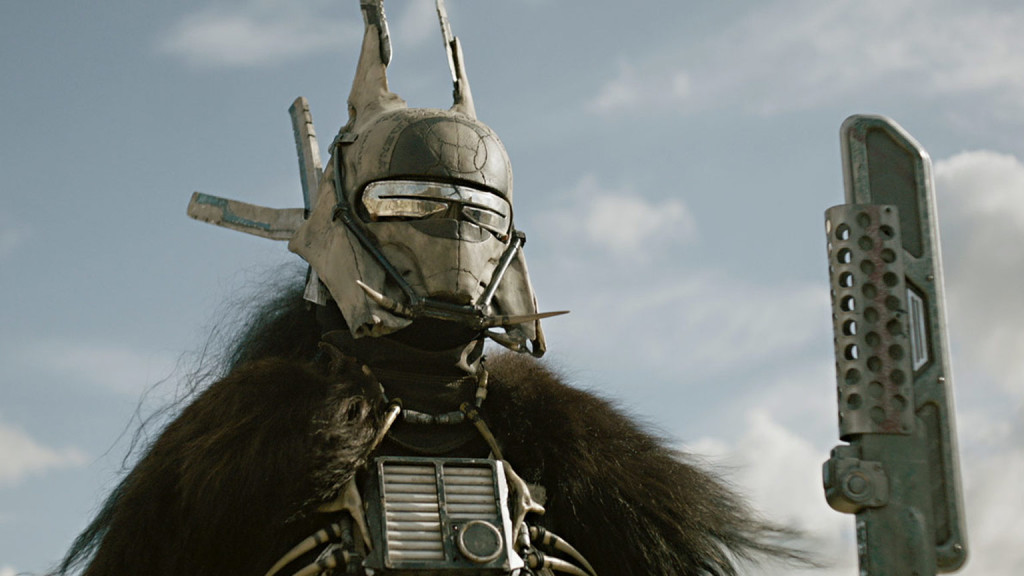Genre: Sci-Fi Adventure
Logline: After getting split up from the love of his life, a young and brash pilot joins a group of smugglers and attempts to pull off the heist of the century.
About: Maligned from the moment film started passing through the gate, the Solo Star Wars movie was on a Death Star sized collision with disaster. Now the stuff of legend, Kathleen Kennedy fired the original directors of the film, Phil Lord and Chris Miller, because they were so slow she didn’t believe they could finish the movie on time, then brought in journeyman director Ron Howard to shoot 70% of the film in 3 months. Sounds like a legit story to me! When you throw on a heaping of “Alden Ehrenreich can’t act,” or so the rumors went, it’s a miracle this movie actually made it to theaters. The Solo script was written by the man who understands the character the best, Empire Strikes Back writer Lawrence Kasdan, along with his son, Jon Kasdan, because why not.
Writers: Lawrence & Jon Kasdan (based on characters created by George Lucas)
Details: 2 hours and 15 minutes
There’s only one question to ask before diving into Solo.
Is it time to fire Kathleen Kennedy?
Between all the Star Wars productions she’s screwed up, the endless number of Star Wars side stories and trilogies she keeps randomly greenlighting, and stating that her proudest achievement is the movie that destroyed the most iconic movie hero of the past 50 years, I’d say it’s time to go.
However, I will say this.
She pulled a rabbit out of the hat on this one. Solo is a good movie. It’s not a great movie. But it’s a good movie.
The script follows a young Han Solo on his dirty grimy planet of Correlia, where he’s fallen in love with a beautiful young woman, Kira (it’s really “Qi’ra” but that’s super annoying to write so I’m going to go with Kira). The two plan to con their way onto a ship and fly away together, but get split up at the spaceport.
Han vows to make enough money to go back and retrieve Kira, and so when he meets a dodgy smuggler, Beckett, who’s got a high-paying job, Han is all in.
That job, a train robbery, doesn’t pan out. And Beckett reveals that the gig was actually his way to pay back big-time gangster Dryden Vos. Without the loot, Dryden will find and kill them.
Han’s got a plan. They’ll get the loot from another planet – the spice mines of Kessel – and pay him back that way. In a twist of fate, Kira now works for Dryden, who sends her along with Han and Beckett (and later, Lando Calrissian), to make sure they complete the job.
The first thing that comes to mind when evaluating Solo on a screenwriting level is stakes. They are way lower than any previous Star Wars movie. The only thing at stake is our characters’ lives and while your life is a big deal in the real world, the movie world is different. Movies are larger than life. That’s why we go to see them. So unless we’re watching the Sundance Grand Jury Prize runner-up, we tend to want more.
This definitely affects Solo because as the movie pushes towards its finale, it feels like it’s flatlining. And that’s because there isn’t a big giant “thing” to defeat.
[starts getting spoilery]
To the Kasdans’ credit, they realize this, and they go all in on a character-driven climax. The whole thing takes place in a room with five people. It turns out that Beckett double-crossed Han and maybe Kira did too. Han tries to talk his way out of it, and we continue to get a series of twists and turns until both Beckett and Voss are dead.
Now here’s the thing about this type of climax. It CAN work. But it only works if the characters are firing on all cylinders. Every character needs to be reaching the pivotal moment in their arc. Han, Kira, and Beckett all did a decent, if unspectacular, job. The problem was Dryden Voss. He just doesn’t stand out. He’s neither super scary or super unique or super interesting. He’s just sort of a guy.
Your villain represents the negative energy in your story. If that energy is in any way muted, your climax isn’t going to pop. Let me explain that in more detail because it’s important. For a climax to work, the negative energy must be stronger than the positive energy. The reason for this is that you need the audience to DOUBT that our hero will succeed. That’s what creates the rush of emotion when they win. Because they overcame something you didn’t think they would overcome.
I didn’t see anything in Dryden Voss that made me think he was smarter or more equipped than our good guys, so I never got that feeling. And that’s why, even though it was admirable that they made the climax character-driven, it didn’t work.
Moving on to this incarnation of Han Solo.
These writers had a near impossible assignment. They had to build a character towards the character we know at the beginning of Star Wars A New Hope, but they could only build him one-third of the way, since they were planning to do a Han Trilogy.
How do you build a character one-third of the way towards anything? It’s impossible. And it forces you to create this muted dialed-down character arc. Which, in turn, creates a muted dialed-down character. I’m not even sure what Han’s flaw was in this movie. I think they were trying to make him trusting and naive, and this journey was supposed to teach him that you can’t think that way. But again, you should still kinda think this way because we still got two movies to go?
The character remains fun, and his charm masks some of what’s missing underneath. But the lack of a definitive belief system in Han makes him wishy-washy, and therefore he’s hit or miss.
The plotting has a similar quality. They opt to do a “two-goal” approach to the narrative. The first goal is to steal energy cells from a train. Once that fails, it’s to get energy from the planet Kessel. I have no problems with this approach. I actually think it’s good. If the whole movie focused on one goal – Kessel – it’ll be stretched too thin. With two goals, each goal moves on a tight timeline.
Clearly, they were hoping to make the Kessel Run the star of the movie. That’s the big action-packed sequence.
Unfortunately, they botch it.
The mission they set up, while a little complicated, is actually clever. They’re stealing unrefined energy from Kessel. Unrefined energy needs to be refined quickly or else it becomes unstable. So after they steal the energy, they have to get it to a refinery quickly or else it will blow. This is why Han needs to do the Kessel Run so quickly (as he famously brags about in Star Wars A New Hope).
But then they screw it up. For one, they don’t keep tabs on the energy cells. We should be seeing bars getting lower and lower signaling that these things are going to blow. But outside of one brief glance at the cells, we never see them again.
In addition, we’ve been hearing about how quickly Han did the Kessel Run all these years. So why do we keep stopping and slowing down while it’s happening? I thought in order to do something fast you needed to go fast. At one point they’re getting sucked into a vortex for five minutes.
The last problem is more of a filmmaking one but I had no basis for what I was looking at with the Kessel Run. We’re in these gassy clouds with giant – I don’t know – mini-planets everywhere? At a certain point I started wondering if we were even in the Kessel Run or we were still on some gassy edge of Kessel or we were in some pre-Kessel Run runway area. It was super confusing.
And that starts with the writing. You have to make sure when you’re constructing an elaborate set-piece that happens in an unfamiliar space with unfamiliar elements that you create a visual plan that makes sense. This is why the Death Star run remains one of the greatest set-pieces ever. It’s so easy to understand. They go down into the trench until they get to the end.
And that sucks because that’s the last big action scene in the movie. So we leave that feeling let-down, confused. And then we’re not sure if we’re going to get another last-minute set-piece. So when we don’t, we feel like… that’s it?
A Star Wars movie should never end on “That’s it?”
Okay, what’s left? Lando was a let-down. I don’t know who’s asking for a Lando film after that performance. That droid was annoying as hell. Chewbacca was awesome. I really liked the alien that Jon Favreau played. Of course he dies early. Great job there, getting rid of one of the only memorable characters. Kira was… I don’t want to say lame. But she didn’t leave an impression. Oh, and what was going on with Enemss Nest or whoever that other pirate was? There’s this dramatic moment where they finally take off the helmet and you’re thinking… what? Boba Fett? No. It’s just some random 20 year old chick with freckles. I’m like who the hell is this chick?? Talk about a letdown.
Okay, now let’s get real. And spoilery. And nerdy.
The big shocking reveal at the end. Darth Maul.
I am a huuuuuuuuuuuuuuuge fan of Darth Maul. I believe his death was one of the single biggest mistakes in the prequels. George Lucas failed on such an epic scale to create interesting characters in those movies. And the ONE character with presence in the movie, Darth Maul, he kills off. It just goes to show how out of touch Lucas was when he made those films.
To bring Maul back is really a statement that’s saying, in the boldest way possible, “You effed up, George. And you effed up so bad that we’re going to forcefully correct your mistake.”
And it’s a good choice because the big problem with this script was the lack of a compelling villain. Both villains in the film were lame. This would ensure that if they made a second film (and I know it’s a big if) that problem would be solved. Because you’d have Jabba the Hut and you’d have Darth Maul. And that would get me to the theater in a heartbeat.
Anyway, this was a fun moviegoing experience. It was a thousand times more enjoyable than my last Star Wars experience, that’s for sure. Check it out, yo.
[ ] What the hell did I just watch?
[ ] wasn’t for me
[x] worth the price of admission
[ ] impressive
[ ] genius
What I learned: It’s so hard to create great characters. 95% of the characters created in movies are forgettable. So when you experience that rare feat of magic of writing a character that’s popping off the page… DON’T KILL THEM OFF. Why would you kill a character off who’s working better than the characters you keep alive? Let the deaths of Jon Favreau’s character in Solo and Darth Maul in Episode 1 be a friendly reminder to keep your awesome characters alive!

